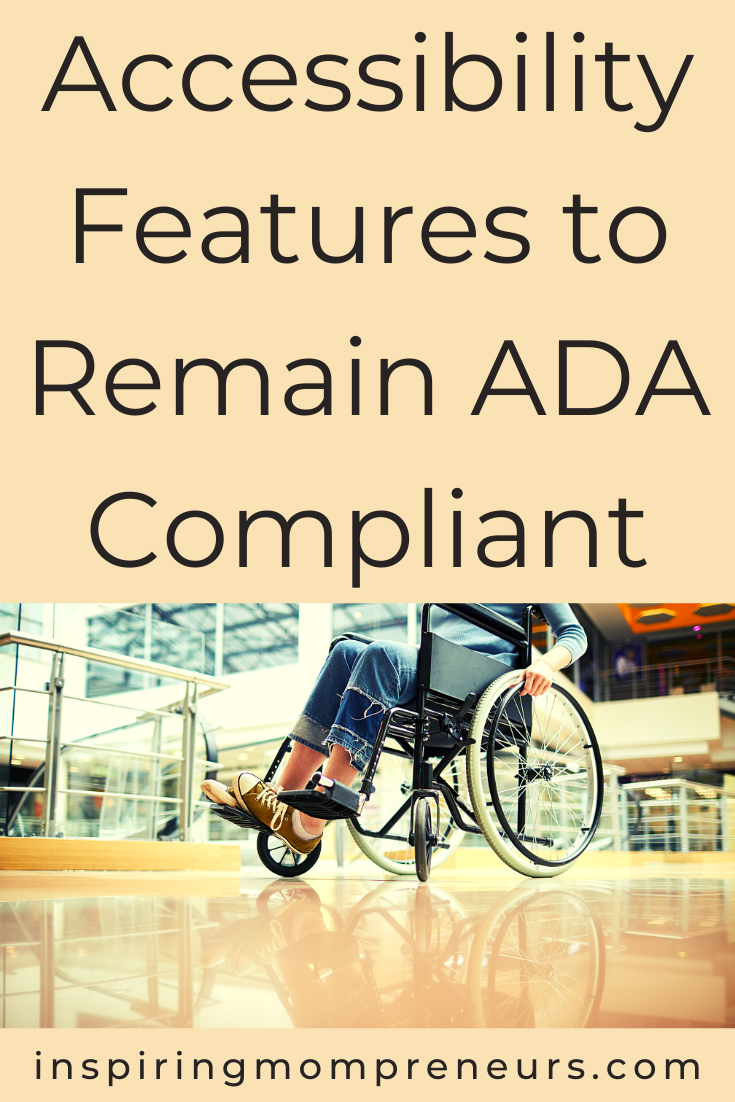Accessibility Features to Remain ADA Compliant
Becoming ADA compliant is important for any commercial building because it shows that the building owners and the businesses that occupy the building respect the needs of all its patrons.
When a commercial building is not compliant, it reflects poorly on all involved. It also opens the building and business owners up to potential fines and lawsuits.
Ensuring that a building is compliant with the Americans With Disabilities Act can be complicated and confusing. If the building is being newly built, achieving compliance means adding all of the necessary features from scratch.
If the building already exists, achieving compliance may mean making changes and additions. This is especially true if the building was constructed before the ADA was passed.
In order to make sure that a building has all of the necessary features required by the ADA, it is helpful to have a checklist to follow.
Among the items on the list, there should be these 6 accessibility features: doorway requirements, ramp requirements, bathroom requirements, handrail requirements, drinking fountain requirements, and signage requirements.
1. Doorway Requirements
One of the requirements set forth by the ADA is that doorways provide a clear width of at least 32 inches and be no more than 48 inches. In addition, a clear path of travel must be provided, along with doors and other hardware that is easy to operate.
Companies such as klein-usa.com can provide the sliding systems to create doorways, doors, partitions, and more that cater to those with disabilities, making it easier to navigate buildings.
A sliding glass door system is one example of a doorway, door, and hardware that is not only compliant with the ADA but also sleek and aesthetically pleasing.
One of the benefits of a sliding glass door is that it does not require any additional space to open. Also, since it does not need a lower track, it provides a pathway that is free of obstacles. A sliding glass door can open with a simple touch, requiring the user to bear only 1% of the door’s weight.
Finally, options are available that allow the door to self-close after the user clears the doorway and to remain open when desired using a brake retainer system in the upper rail.
 2. Ramp Requirements
2. Ramp Requirements
Guidelines for ramps stated in the ADA include specifications for the ramp length and slope, landing placement and size, and handrail construction.
- In general, a ramp is a sloping route with a slope greater than 1 inch vertical rise per 20 inches horizontal run.
- The maximum allowable slope is 1:12, although for existing buildings where space is an issue, the allowable slope can be greater.
- The minimum width is 36 inches, while the minimum length is 60 inches.
- A level landing of at least 5 square feet is required at the top and bottom of the ramp.
- If the ramp is longer than 72 inches or the rise is greater than 6 inches, handrails are required on both sides.
While all this may seem very particular, once in place the ramp provides safe access to building for those who use a walker or a wheelchair.
3. Bathroom Requirements
Different specifications exist for single-user and multi-user bathrooms, according to the ADA. Single-user restrooms are generally simpler.
The size requirement states that the user must have 30 inch by 48 inch access to a sink, and the toilet height should be 17 inches. In addition, the centerline of the toilet should be 18 inches from the wall.
In order to allow ample room for a wheelchair or walker to turn around, the distance from side wall to rear wall needs to be 60 inches.
Multi-user bathrooms follow these same guidelines, along with a few additional specifications. For example, stalls should be hung at a maximum of 17 inches off the floor, and grab bars should be mounted 36 inches off the floor.
In addition to these things, it is best to consider installing lever, paddle, or infrared faucets to make using them easier, as well as no-touch soap dispensers.
Keeping in mind the needs of the disabled will make it easier for them to use the bathroom in a public building.
4. Handrail Requirements
Whenever a handicap ramp has a rise of greater than 6 inches or a run greater than 72 inches, the ADA states that handrails must be installed on both sides.
Such a handrail must be placed 1 ½ inches from the wall and must be continuous on the inside. The top of the handrail should be between 34 inches and 38 inches from the ground, and its gripping surface should be 1 ½ inches wide.
Additional requirements are described based on the exact location of the handrails in specific situations. Handrails are important because they provide an additional layer of protection and injury prevention for those who are using the ramp.
5. Drinking Fountain Requirements
The owners and tenants of commercial buildings should also consider the needs of the disabled when installing water fountains.
The ADA states that drinking fountains should spout outlets that are no more than 36 inches from the ground. If the drinking fountain is meant for children, the maximum spout height from the ground should be no more than 30 inches.
In addition, the spouts should be at least 15 inches from the vertical support and no more than 5 inches from the front edge of the unit.
These minor adjustments allow those in wheelchairs to be able to access the spouts easily.
6. Signage Requirements
The ADA also describes specifications for signage throughout commercial buildings. First, all signs should have a matte, non-glare finish. They should also possess a 70% contrast between lettering and background.
Wording in Braille is required for signage that identifies a permanent space. There are additional requirements for font type and size, depending on the sign, as well as requirements for spacing between Braille lettering.
Making the signage accessible will ensure that everyone, including the disabled, can read and understand the information being conveyed.
Conclusion
Compliance with the standards for commercial buildings set forth by the Americans With Disabilities Act is of the utmost importance for building owners and tenants.
Its importance lies not just in the fact that it will help to avoid fines and lawsuits but also in the need to show those with disabilities that their needs matter and that they are respected.
Sometimes the responsibility for compliance lies with the building’s owner, and other times it lies with the tenant. Regardless, both owner and tenant need to work together in order to ensure that the requirements are met and that the needs of the disabled population are fulfilled.
Do you own or lease a commercial building in the USA? Do you know whether your building is compliant with the Americans with Disability Act? Here’s a checklist of 6 accessibility features to remain ADA compliant.



Pingback: My Homepage